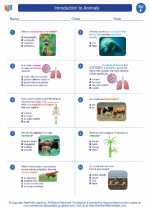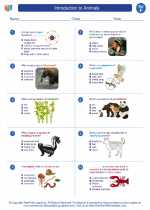What is Bioremediation?
Bioremediation is a process that utilizes living organisms to degrade, detoxify, or eliminate pollutants from the environment.
Types of Bioremediation
There are different types of bioremediation techniques, including:
- Biostimulation: Adding nutrients to stimulate the growth of indigenous microorganisms that can break down contaminants.
- Bioaugmentation: Introducing specialized microbial cultures to enhance the degradation of specific pollutants.
- Phytoremediation: Using plants to absorb, metabolize, or immobilize contaminants from soil or water.
- Cleaning up oil spills
- Remediating contaminated soil at industrial sites
- Restoring ecosystems impacted by pollutants
- Treating wastewater to remove organic pollutants
- Minimizes the need for extensive excavation or physical removal of contaminated materials
- Reduces the generation of hazardous waste
- Promotes natural restoration of the environment
- Cost-effective compared to traditional remediation methods
- Effectiveness may depend on environmental conditions and the types of contaminants
- Longer remediation time compared to some chemical treatments
- Regulatory approvals and public acceptance may vary .
Bioremediation Applications
Bioremediation can be used in various environmental remediation scenarios, such as:
Benefits of Bioremediation
There are several advantages to using bioremediation, including:
Challenges and Limitations
While bioremediation offers sustainable solutions, it also has some limitations and challenges, such as:
◂Science Worksheets and Study Guides Sixth Grade. Introduction to Animals
Study Guide Introduction to Animals
Introduction to Animals  Activity Lesson
Activity Lesson Introduction to Animals
Introduction to Animals  Worksheet/Answer key
Worksheet/Answer key Introduction to Animals
Introduction to Animals  Worksheet/Answer key
Worksheet/Answer key Introduction to Animals
Introduction to Animals  Worksheet/Answer key
Worksheet/Answer key Introduction to Animals
Introduction to Animals  Vocabulary/Answer key
Vocabulary/Answer key Introduction to Animals
Introduction to Animals  Vocabulary/Answer key
Vocabulary/Answer key Introduction to Animals
Introduction to Animals  Vocabulary/Answer key
Vocabulary/Answer key Introduction to Animals
Introduction to Animals  Vocabulary/Answer key
Vocabulary/Answer key Introduction to Animals
Introduction to Animals 

 Activity Lesson
Activity Lesson
 Worksheet/Answer key
Worksheet/Answer key
 Worksheet/Answer key
Worksheet/Answer key
 Worksheet/Answer key
Worksheet/Answer key
 Vocabulary/Answer key
Vocabulary/Answer key
 Vocabulary/Answer key
Vocabulary/Answer key
 Vocabulary/Answer key
Vocabulary/Answer key
 Vocabulary/Answer key
Vocabulary/Answer key

The resources above cover the following skills:
LIFE SCIENCE
From Molecules to Organisms: Structures and Processes